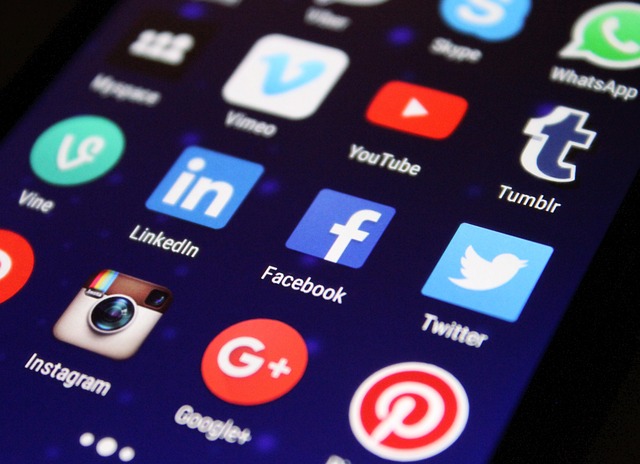Introduction: Reinvention or Obsolescence
The media world hasn’t just changed—it’s flipped. Streaming ate cable. Social rewrote how people consume news. AI tools turned everyday creators into content factories. Audiences expect speed, personalization, and relevance at all times—and they’ll swipe past anything that doesn’t deliver.
Old playbooks don’t hold. Relying on ad revenue alone? Risky. Churning out content without a strong editorial core? Useless. Media brands that failed to evolve got left behind. The ones still standing have one thing in common: they learned how to adapt, fast.
Innovation isn’t optional—it’s survival. Trends come and go, but the ability to trial, pivot, and grow in real-time is the real edge. Whether it’s adopting new tech or embracing community-first thinking, modern media players need to move forward or move out of the way.
Reinventing the Content Model
The media world has finally accepted a hard truth: ads aren’t enough. Audiences are fed up with cluttered banners and hollow clickbait. So the smartest brands are moving to models that value quality—and get people to pay for it. Subscriptions, memberships, paywalls: these tools aren’t just about revenue, they’re about loyalty. When someone puts their money behind your work, they stick around longer, engage more, and expect better. That’s pressure, sure—but it’s also freedom.
At the same time, data has become essential to storytelling. This doesn’t mean chasing every hot trend or spying on users—it means listening. Real-time insights, watch patterns, time-on-page metrics: they all help teams adapt content quickly and stay relevant. The days of the six-month editorial calendar are fading. Replace it with agility and testing.
Look at The Atlantic. A legacy player, old-school roots. But they overhauled their digital presence strategically: dynamic paywall, member-first content, and analytics that inform tone and timing—not just traffic wins. They didn’t just survive. They got sharper, leaner, and built a model worth paying for.
The lesson? Reinvention doesn’t mean losing identity. It means doubling down on value—then delivering it on your own terms.
Building Community, Not Just Audience
Media brands that are thriving in 2024 stopped chasing followers—and started building communities. That shift isn’t just philosophical. It’s tactical. Social-first strategies aren’t about flooding feeds with content; they’re about starting conversations, listening for signals, and showing up where the audience already lives. It’s less broadcast, more dialogue.
By leaning into interaction, brands elevate casual followers into loyal superfans. These are the people who not only consume but advocate—sharing articles, defending the brand, engaging in comments, and showing up to live events or streams. And that loyalty pays off. Algorithms reward engagement spikes. Superfans drive those spikes.
Interactive formats are the bridge. Live AMAs, comment-driven polls, behind-the-scenes Q&As—these tools do more than build hype. They give the audience a say, and that sense of ownership deepens ties. When people feel heard, they stick around. They participate. They invite others in.
The brands doing best are creating less content and more connection. And connection, in a fragmented media world, is the real power move.
Tech Integration as Brand Differentiator
As media consumption habits shift, technology is no longer just a support system—it’s a key differentiator. Innovative media brands are distinguishing themselves by integrating tech at the core of their operations, using it to personalize content, streamline workflows, and enhance user experience in ways that feel seamless and forward-thinking.
AI-Powered Personalization
Artificial intelligence is transforming how media companies understand and serve their audiences. The days of one-size-fits-all content drops are fading. In their place:
- AI engines analyze user behavior in real time
- Personalized content feeds increase relevance and retention
- Recommendation systems suggest articles, videos, or even newsletters based on reader patterns
This kind of dynamic personalization helps brands move from broadcasting to genuine digital conversation—serving the right content to the right person at the right time.
Automation That Enhances Creativity
Efficiency doesn’t mean compromise. Media teams are turning to automation for repetitive tasks, freeing human creatives to focus on innovation and storytelling.
Key automation approaches include:
- Auto-tagging articles and videos for better discoverability
- Scheduling content across platforms without manual upkeep
- Generating performance summaries and trend reports from data dashboards
However, the most successful brands don’t let automation erode the human voice. Editorial tone, creative sensibility, and audience empathy still lead the way.
Immersive and Emerging Tech: The Next Frontier
Media brands ready to push boundaries are leaning into immersive formats and emerging tech. These tools aren’t just flashy—they offer new ways to engage users in deeper, more experiential content.
Emerging tech highlights:
- AR (Augmented Reality): Enhancing event coverage, product storytelling, and educational experiences
- VR (Virtual Reality): Used for immersive reporting, branded entertainment, and virtual showrooms
- Future-forward UX: Interactive layouts, gesture-based navigation, and voice-search integration to meet evolving user habits
The goal isn’t adopting tech for tech’s sake—it’s deploying innovation that enhances value, elevates storytelling, and connects with audiences in more meaningful ways.
Cross-Platform Thinking
As consumer touchpoints multiply, media brands can no longer afford to treat each platform in isolation. Today’s audiences move seamlessly between apps, devices, and experiences. To stay relevant, brands must do the same—strategically and cohesively.
Why a Multi-Channel Presence Is No Longer Optional
Audiences don’t live in silos—and neither can your content:
- Platform diversity = audience diversity. TikTok, YouTube, newsletters, podcasts—they each attract different demographics and consumption habits.
- Algorithm advantage. Platforms reward consistent, native content. Spreading your presence reduces over-reliance on any single algorithm.
- Resilience through reach. If one platform’s performance dips, your brand doesn’t disappear.
Syncing Tone and Strategy Across Platforms
Each platform speaks a different language. Successful media brands learn to translate their voice accordingly:
- TikTok: Short-form, off-the-cuff, culturally attuned content
- YouTube: Long-form storytelling, visual depth, explainer formats
- Newsletters: Direct tone, value-first summaries, curated expertise
- X and LinkedIn: Thought leadership, conversation starters, and timely takes
Coherence comes from aligning core values and messaging while shaping content for the format and mood of each channel.
Brand tone = adaptable, not diluted.
Strategy = consistent, not cookie-cutter.
Maintaining Brand Identity While Adapting Formats
Top media brands succeed cross-platform by treating their identity as a compass—not a script. They:
- Establish unshakable brand pillars. What the brand stands for shouldn’t shift, even if content does.
- Design visual systems that flex. Colors, logos, and typography remain familiar, though layout and tone may vary.
- Maintain a signature voice. Regardless of length or format, the brand’s voice should remain recognizable and trustable.
The goal? Be unmistakably yourself—wherever the audience finds you.
Culture Over Content
Why Culture Fuels Innovation
Innovation doesn’t start with a flashy new product or a clever campaign—it starts behind the scenes. Company culture is the foundation of every successful media transformation. Brands that nurture creativity, agility, and openness to change are the ones setting the pace in an increasingly competitive landscape.
- Innovation grows where experimentation is encouraged
- Open communication fuels new ideas
- Leadership sets the tone for flexibility and risk-taking
Nimble Teams vs. Legacy Bloat
Agility has become a competitive advantage. Smaller, cross-functional teams are able to move quickly, test ideas faster, and adapt to audience feedback in real time. In contrast, outdated structures with heavy hierarchies often hinder decision-making and slow down innovation.
- Small, empowered teams execute faster
- Cross-department collaboration drives creative breakthroughs
- Legacy systems often breed inertia and resistance to change
Building a Culture of Experimentation
A culture that embraces trial, error, and fast cycles of iteration unlocks powerful outcomes. Top media brands now treat every campaign or piece of content as a learning opportunity—not a one-shot bet. The ability to fail fast and learn faster is a key marker of a future-ready brand.
- Normalize failure as part of the innovation cycle
- Use data to inform rapid iteration
- Reward testing, curiosity, and continuous learning
Innovation is not just a function—it’s an internal mindset. Companies that prioritize adaptability within their teams are the ones redefining what success looks like in media.
Profiles in Transformation
Success in today’s media landscape isn’t luck—it’s strategy, grit, and bold moves. The leaders making waves aren’t just thinking outside the box—they’re tossing the box. These are the voices who said no to rinse-and-repeat and yes to reinvention.
Take Felix Kwan, who turned a niche hip-hop newsletter into a multimedia micro-empire by betting early on voice search content and curating hyperlocal artist ecosystems. His edge? He listened more than he talked, letting audience behavior shape editorial strategy. Then there’s Maya El-Amin, who retooled a legacy food magazine into a data-driven juggernaut. She killed print when it still made money—and doubled down on short-form, multilingual cooking vids backed by real-time analytics.
Leadership like this doesn’t parade around calling itself revolutionary. It proves it. Whether it’s reshaping old institutions or building something lean from scratch, these voices earn attention by doing the hard, quiet work of understanding what audiences actually want—and delivering it with precision.
For deeper dives into these and other change-makers, check out Influential Figures in Media.
Closing Thoughts
Innovation doesn’t show up once and leave a trophy on the table. It’s ongoing, uncomfortable, and absolutely necessary. In media, that means staying alert to how people consume, what tech reshapes delivery, and where trust is built or lost. It’s not about chasing trends for the sake of headlines—it’s about delivering value in ways that fit the times.
Adaptability isn’t a buzzword. It’s survival DNA. The brands that quit clinging to the old models and start listening, experimenting, and adjusting? They’re the ones that last. Not because they do everything right, but because they respond fast and stay focused on the one thing that doesn’t change: their audience.
At the end of the day, evolution beats legacy. The media brands that endure are the ones that get this—and keep proving it.



